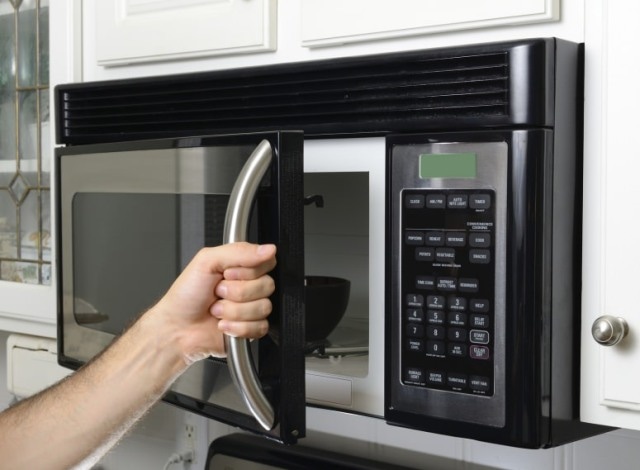Jun 15 2016
Current electronic devices, such as X-ray machines and microwave ovens, are powered by strong, focused electrons beams and are found everywhere. However, several of the materials in those devices have on the whole not changed over the years.
 Vacuum electronic devices are remarkably efficient. For example, using a microwave oven harnesses almost 90 percent of the initial energy to heat lunch. PHOTO ILLUSTRATION: ISTOCK © SEAN PAVONE
Vacuum electronic devices are remarkably efficient. For example, using a microwave oven harnesses almost 90 percent of the initial energy to heat lunch. PHOTO ILLUSTRATION: ISTOCK © SEAN PAVONE
Recently, a team of material and electrical engineers from the University of Wisconsin–Madison have detected a substance that could greatly enhance the technology. The novel material is a part of the family of compounds known as perovskites. It is capable of promoting the output power of the electron beam, and enables remote sensing and long-distance communications for a much lower energy cost than currently spent.
The researchers received a $1.3 million grant from the Defense Advanced Research Projects Agency. They are determined to synthesize huge quantities of the material and additionally analyze its properties. They also hope to locate other applications where this concept can be utilized.
The devices that would rely on UW–Madison’s perovskite research would be able to take useful energy from electron streams flowing via a vacuum, and are called vacuum electronics.
Vacuum electronic devices make electron energy to function for a wide variety of functions, from spotting distant objects using radar, to speeding up particles in research reactors, to communicating with interstellar probes flying beyond Pluto.
Anytime you need to efficiently extract energy from an electron stream with a small, compact device, then a vacuum electronic device is your best bet.
John Booske, Vilas Distinguished Achievement Professor in Electrical and Computer Engineering, UW–Madison
Since electrons moving within sealed vacuums do not meet any resistance, vacuum electronic devices are outstandingly efficient. For instance, nearly 90% of the initial energy used to heat lunch is now harnessed by a microwave oven to zap frozen burritos.
The devices are driven by charged beams, which originate from sources called cathodes. The majority of cathodes are manufactured from metals that produce electrons from their surface when exposed to high temperature heat. The higher the emission level, the stronger the electron beam. However, a number of metals do not discharge large quantities of electrons from their surfaces, even at 1,000°C.
The power per unit volume you need out of a satellite transmitter is huge. However, the size and power budget are both limited because payload is very expensive in a rocket, and you can only harness a meager amount of energy from the sun.
John Booske, Vilas Distinguished Achievement Professor in Electrical and Computer Engineering, UW–Madison
Booske, along with Dane Morgan, the Harvey D. Spangler Professor in materials science and engineering at UW–Madison, aimed to obtain additional electronic bang for the input power buck, and therefore set out to discover novel materials that could behave as sources of electron.
Several of the vacuum electronic devices produce beams by heating tungsten to high temperatures, much like the way filaments in incandescent light bulbs generate light. That well-known glow in fact represents counterproductive energy loss for the functioning of an electron beam, so tungsten cathodes normally are given a thin coating of barium oxide, which helps them to emit electrons rather than just light up.
Since barium oxide is volatile, the coating rips off from the surface when exposed to high temperatures, thus deforming the cathode over time.
Certain substitute cathode materials have materialized in the past, but none of them can dependably perform better than existing technologies. The trial-and-error method of detecting and characterizing candidates from amongst a wide range of probable combinations between elements on the periodic table is similar to selecting a single needle from a massive haystack.
Booske, Morgan and their student Ryan Jacobs, however, have successfully discovered the needle.
With a well-proven computational technique, we’ve identified a material that, on paper, looks like the first promising prospect that could be better than the state-of-the-art cathodes.
John Booske, Vilas Distinguished Achievement Professor in Electrical and Computer Engineering, UW–Madison
Using a basic method known as density functional theory, the team solved quantum mechanical equations that manipulate the materials’ atomic properties. Advanced high-throughput computing permitted them to foretell the bulk performance of candidate compounds and quickly balance potential materials.
“Allowing the computer to crunch through the material properties for all different sorts of compounds allowed us to screen and compare among the enormous range of possible perovskites,” says Booske.
This method - tough-force computational comparison informed by realistically chosen parameters - picked out a probable treasure.
While we are excited about our initial success, the results of this first search are really just the tip of the iceberg. With the understanding we have gained, we can now integrate high-throughput computation and informatics techniques to screen intelligently through thousands of possible materials to find many new promising candidates. This type of computational materials design, driven by leading research universities like UW–Madison, is changing how we discover materials.
Dane Morgan, Harvey D. Spangler Professor in Materials Science and Engineering, UW–Madison
The team is involved in creating strategies to fabricate huge quantities of the pure material and additionally describe its properties. Jacobs, now a scientist in the Booske and Morgan labs, will head this phase of research activities. The researchers are partnering with the Wisconsin Alumni Research Foundation to patent the material.